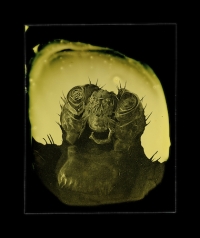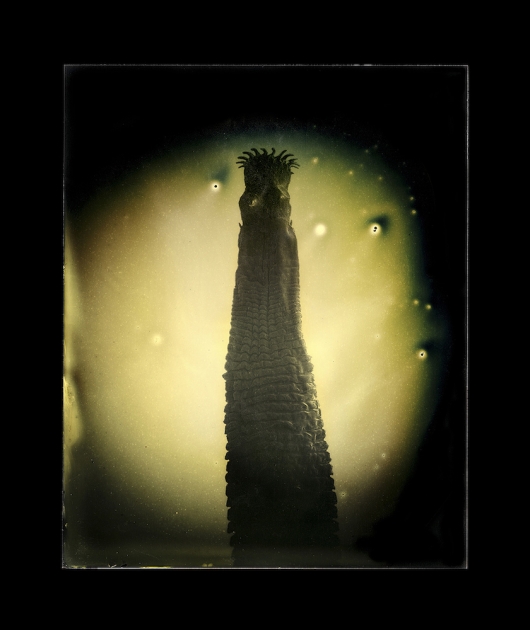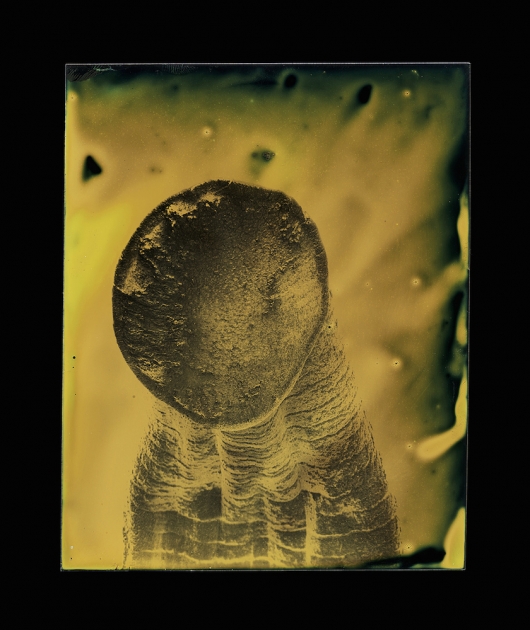The horrors that live within us: Marcus DeSieno’s giant ferrotype critters
posted Friday, August 15, 2014 at 9:51 AM EDT

It's one thing to know that our bodies are full of bacteria, parasites, germs and other critter, some of them useful and some of them harmful. But it's an entirely different thing to see these creepy creatures magnified on a four feet ferrotype print. Talk about the stuff of nightmares.
Nightmares are exactly the driving force behind Marcus DeSieno's ongoing project, in which he transfers electron microscope scans of all kinds of critters onto photographic ferrotype plates. Watching the eponymous alien in Ridley Scott's 1979 movie emerge from a human body as a child stirred up a fear of parasites in DeSieno, which he carried over into adulthood.
Now studying towards an MFA at the University of South Florida, DeSieno decided to battle his fear of the microscopic fauna by engaging them through artistic means -- by printing them at huge sizes. For his gloomy photographs that depict tiny organisms as if they were giant alien creatures, DeSieno combines one of the oldest photographic techniques with modern scientific technology.

In order to create his four feet prints, he first scans his subjects using an electron microscope, with the help of lab technicians at USF's Advanced Microscopy and Cell Imaging Lab. The microscope scans are then transferred onto a digital negative -- similar to the process shown in this video -- which is then used to create a ferrotype print of the image.
For those unfamiliar with the process, a ferrotype -- also called a tintype -- is an early photographic print created on a metal plate, in this case an iron (lat. ferrum) plate. The plates are covered with a light sensitive gelatin emulsion containing silver halides, much like the photographic film that was invented much later. And just like film, the plates are developed once exposed, with the difference being that they create a positive image instead of a negative.

The ferrotype plates are then scanned once more, and finally digitally printed at a size of four feet. The resulting images show us the magnified inhabitants of a world that is invisible to the naked eye, and that most of us know very little about -- despite the fact that it is a ubiquitous part of our daily lives. The creepers depicted include ticks, worms, tiny insect larvae, bed bugs and more.
For DeSieni, engaging his fear of parasites has brought relief: "After working with these animals for well over a year that fear has evaporated and transformed into an appreciation for their complexity and diversity," he told Hyperallergic. As frightening as the creatures shown in his prints look at huge magification, maybe seeing them in such great detail can actually help take away some of their creepiness. Or maybe it does the exact opposite and makes the nightmares even worse...
More of Marcus DeSieno's work can be found below as well as on his website. View at your own risk!




(via Laughing Squid; additional information via National Geographic, Smithsonian)